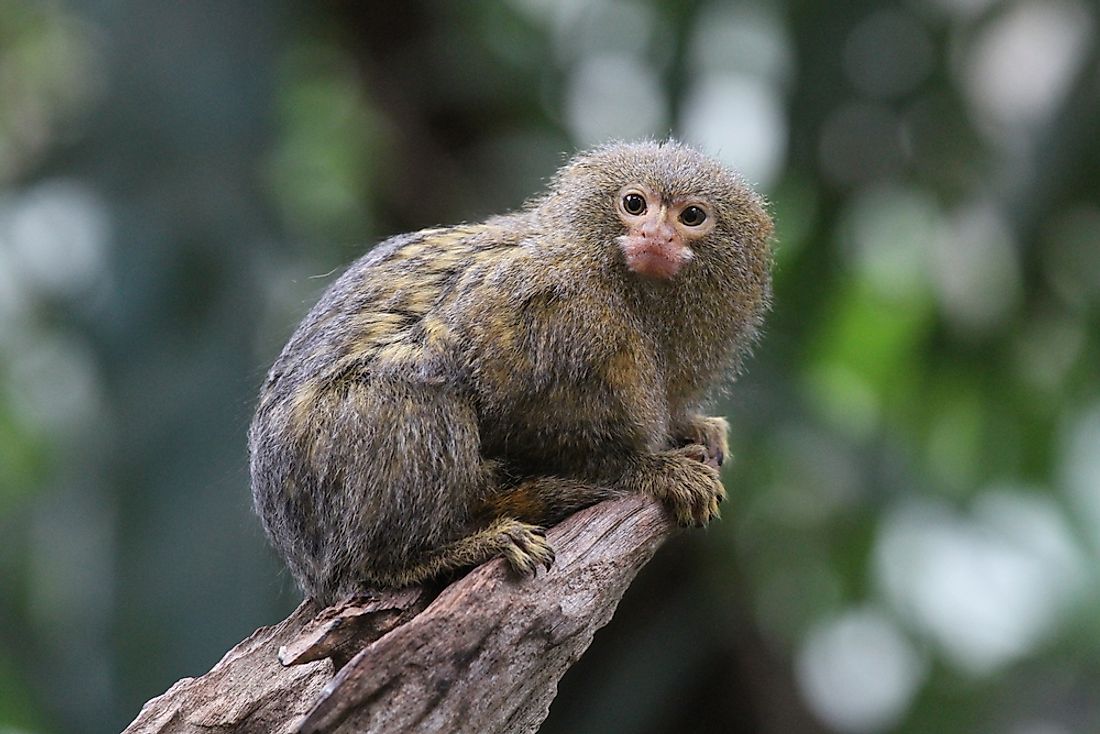What is the World's Smallest Kind of Monkey?

The pygmy marmoset (Cebuella pygmaea) is a species of New World monkey natively found in the Amazon rainforest. The species is noted for being the world’s smallest monkey. An adult pygmy marmoset weighs five ounces and measures a maximum of six inches from head to tail. Sexual dimorphism is observed in the species with females being generally heavier than males. There are two subspecies of the tiny monkey; the Eastern pygmy marmoset and the Northern pygmy marmoset. The monkey can be found in Colombia, Bolivia, Peru, Brazil, and Ecuador.
Behavior
The pygmy marmoset monkey walks on all fours and spends most of its time on higher parts of the trees (about 66 feet above the ground) but rarely in the canopy. The agility of the monkey is evident in its ability to make 16-foot leaps between branches. The pygmy marmoset makes a nest for its young ones on the thin branches found on the trees. The preference of the thin branches is because they cannot support the weight of potential predators such as jaguars and snakes. The social mammal lives in groups each comprised of up to nine individuals. Each group has at least one adult breeding female and adult male and their offspring. The monkey has an expressive communication system that involves sounding trills and j-calls. The sounds help the monkeys in a group communicate amongst each other when foraging or traveling.
Diet
The monkey feeds primarily on gum and sap from trees, and its body is well-adapted to this diet. The arms have sharp claws which the monkey uses to penetrate the thick bark from which sap is produced. The pygmy marmoset’s dental formula features incisors that encourage the flow of sap. The monkey’s digestive system is also adapted to its diet and features a large cecum that is necessary for the digestion of gum. Other items that the pygmy marmoset monkey feeds on include insects, fruits, and nectar.
Reproduction
A non-seasonal breeder, the pygmy marmoset usually gives birth to a set of twins either once or twice per year. The monkeys have monogamous relationships where pairs are bonded for life. The young pygmy marmoset monkeys have a high mortality rate as the mother monkeys rarely produce milk that is enough for the multiples. Some of the young fall from their nests to their deaths while others fall prey to raptors and snakes. As a result of these factors, more than 75% of all young monkeys do not reach adulthood.
Threats
Conservationists believe that the population of the pygmy marmoset monkey is at low risk. The International Union for Conservation of Nature lists the monkey as “Least Concern.” The reason behind this designation is partly due to the extensive natural range the monkeys have. However, the monkey’s existence is still threatened by the wanton destruction of its habitat by human activity in the form of deforestation. The monkeys are also captured from the wild and sold as exotic pets due to their small size and relatively domicile temperament.











